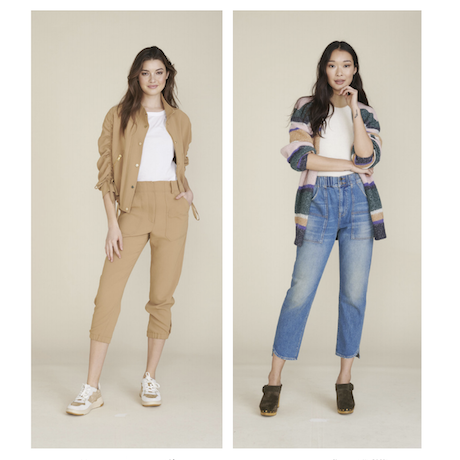The Dos and Don’ts of Wearing Heels: Dr. Miranda Wall Weighs In

Dr. Miranda Wall
I am not sure about you but I know I had never before considered consulting a chiropractor about wearing heels. But I recently sat down with Dr. Miranda Wall, a chiropractor at The Chiropractic Associates in Old Town to discuss the dos and don’ts of wearing heels. I met her at her office on the 1200 block of North Pitt Street to talk all things heels. (P.S. She is also a yoga instructor and nutrition expert.) Our discussion was both informative and interesting. We touched on topics ranging from heel height limitations, comfort, and duration of wear.

Dr. Miranda Wall
It seems somewhere along the line we began abiding by an unwritten rule that all women should wear heels. Miranda made clear, however, that we are all different. Our bodies are different, and it is of this that we should be mindful when considering the purchase and wearing of heels.

We began with heel height limitations. I have always assumed that age had everything to do with how high your heel should be. I hear from customers regularly, “I used to wear heels like that when I was your age but I can’t anymore!” Miranda corrected this misconception. The appropriate heel height has much more to do with the structure of your foot and ankle mobility. If you have a flatter foot (in other words, an instep that is not very high and your arch touches the ground), then you will actually benefit from wearing a higher heel. On the other hand, if your instep/arch is higher you can cause strain on your arches if you wear high heels on the regular.

Ankle mobility is also important when choosing a heel height. If your ankle is very mobile (in other words, you are able to rotate it easily), you will find it easier to walk gracefully in high heels. In short, knowing the structure of your foot and the mobility of your ankle are key to alleviating pain and discomfort throughout the day.

We then moved on to comfort. So, how do know if a shoe will be comfortable or not? How can you predict whether or not you’ll be able to wear it for long periods of time? Miranda believes that in order to make a realistic assessment of a new shoe you must try it on towards the end of the day. This will enable you to get a sense of the shoe’s comfort level when your foot is at its highest swelling point. (Lucky for you, The Shoe Hive is open until 8PM Monday through Saturday–and 6PM on Sunday–through the end of summer!) Throughout the day, your foot naturally swells no matter the shoes you have chosen. Miranda disputes the idea of a breaking in period — if it is uncomfortable in the store, it will be uncomfortable in the long run.

Most of us expect to be in pain after a full work day in heels. Miranda suggests keeping your heels under three inches if you must wear them all day; she also recommends minimizing the distance you walk in them. It is always better to bring a pair of flats (or even a lower pair of heels) with you to change in and out of throughout the day. Swapping out shoes several times a day will put less strain on your feet which will prevent lower back pain and joint problems.
What Miranda hopes we all take away from the time I spent with her is this: The more aware you are of your body and its needs, the better luck you will have in finding the right heel for you.
A quick note from Christen: Miranda is my go-to for all things medical. She has helped me recover from bronchitis, shin splints, sinus infections, and a neck injury. Book an appointment with her, even if it’s just for an adjustment. Aside from being one of my very favorite people, she is incredibly talented and insightful.





